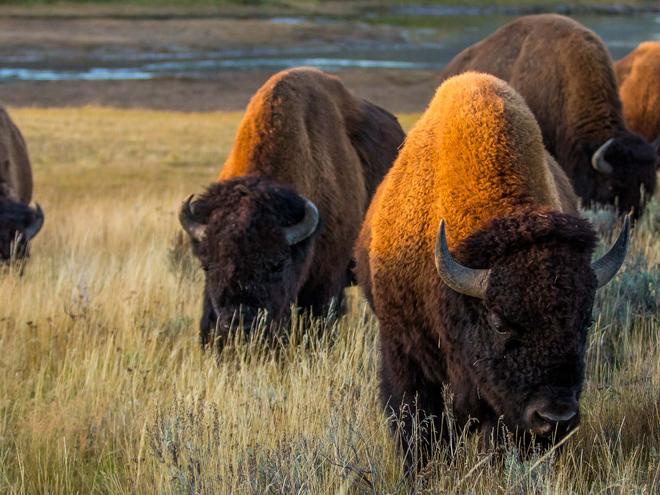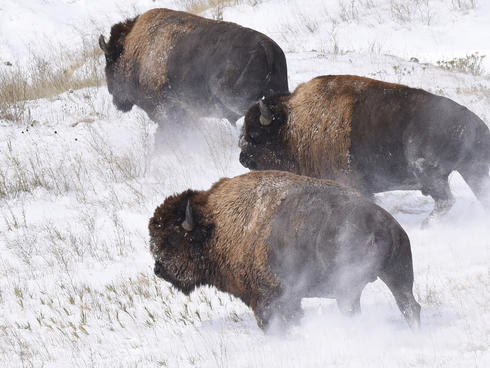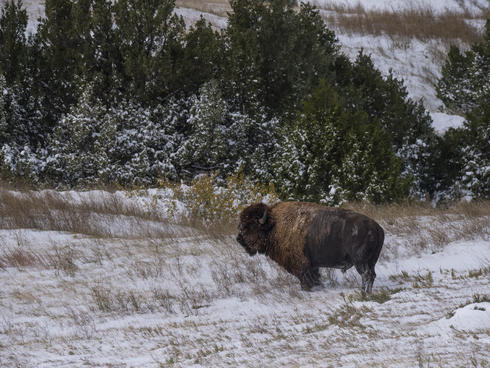
On Oct. 11, 2019 people around the world celebrated the release of four plains bison onto a snow-covered butte in Badlands National Park, South Dakota. Their large, chocolate brown bodies were in beautiful contrast against the park’s snow-covered sagebrush, hills, and canyons. This was the first time that the species had set hoof in this area since 1877. For wildlife fans, the United States’ national mammal it was a homecoming long overdue. For tribal community members who were there to witness this important moment, the significance was immense for much deeper reasons.
“As a tribe, we and the buffalo are one and the same,” said Monica
Terkildsen, a member of the Oglala Sioux Tribe and Tribal Community
Liaison for WWF’s Northern Great Plains Program. “The buffalo represent
our own healthy return. The buffalo once provided our home, our life
ways, our food, and created a diverse, flourishing ecosystem. Today, as
our herds are growing, we are beginning to re-center as a people. So
bison have a deep, profound meaning to us. They mean economics, they
mean health, they mean our spiritual well-being. They are our elders
that guide us. They are our relatives.”
Prior to European
settlement plains bison numbered between 30 million and 60 million and
were the widest-ranging large mammal in North America. Bison played an
incalculable role in the lives and traditions of Native Americans and
many species that live in the plains. By 1889, only 512 plains bison
remained after westward expansion and a concerted effort by the US
government to eliminate the bison and subdue the tribes that relied so
heavily upon them.


Today, WWF is working with tribal partners to restore bison to their rightful place at the heart of their people’s culture, economy, and ecology. Our work includes efforts at the Fort Peck and Fort Belknap Reservations in Montana to foster a renewed sense of connection to bison, and increased community support for bison programs and restoration efforts. After the absence of bison for over a century on tribal lands, restoring this relationship is not a simple endeavor. However, with support from tribal leaders, we have begun to identify the values, needs, and aspirations of community members for their tribal bison programs. As the recognized value of bison to the people increases, the constituency that supports bison restoration grows as well.
Learn more about bison and WWF’s work to restore their populations.
Enviroshop is maintained by dedicated NetSys Interactive Inc. owners & employees who generously contribute their time to maintenance & editing, web design, custom programming, & website hosting for Enviroshop.
